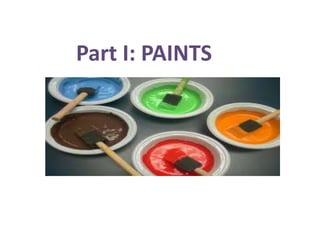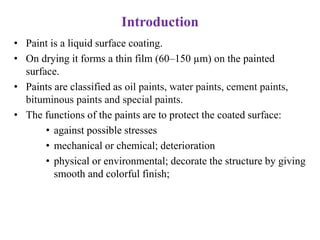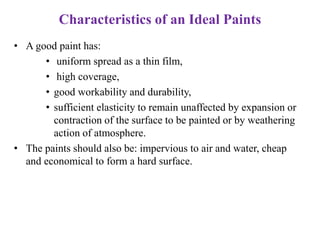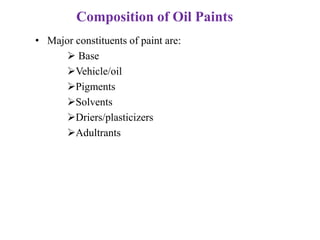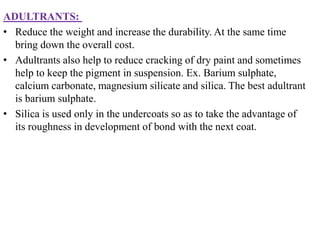The document provides a comprehensive overview of paints, their classifications, compositions, and application techniques. It details the essential components of paints, such as bases, vehicles, pigments, solvents, and driers, as well as the importance of proper surface preparation and painting methods for various materials. Additionally, it highlights the significance of factors like covering power and pigment volume concentration in determining paint quality and effectiveness.

